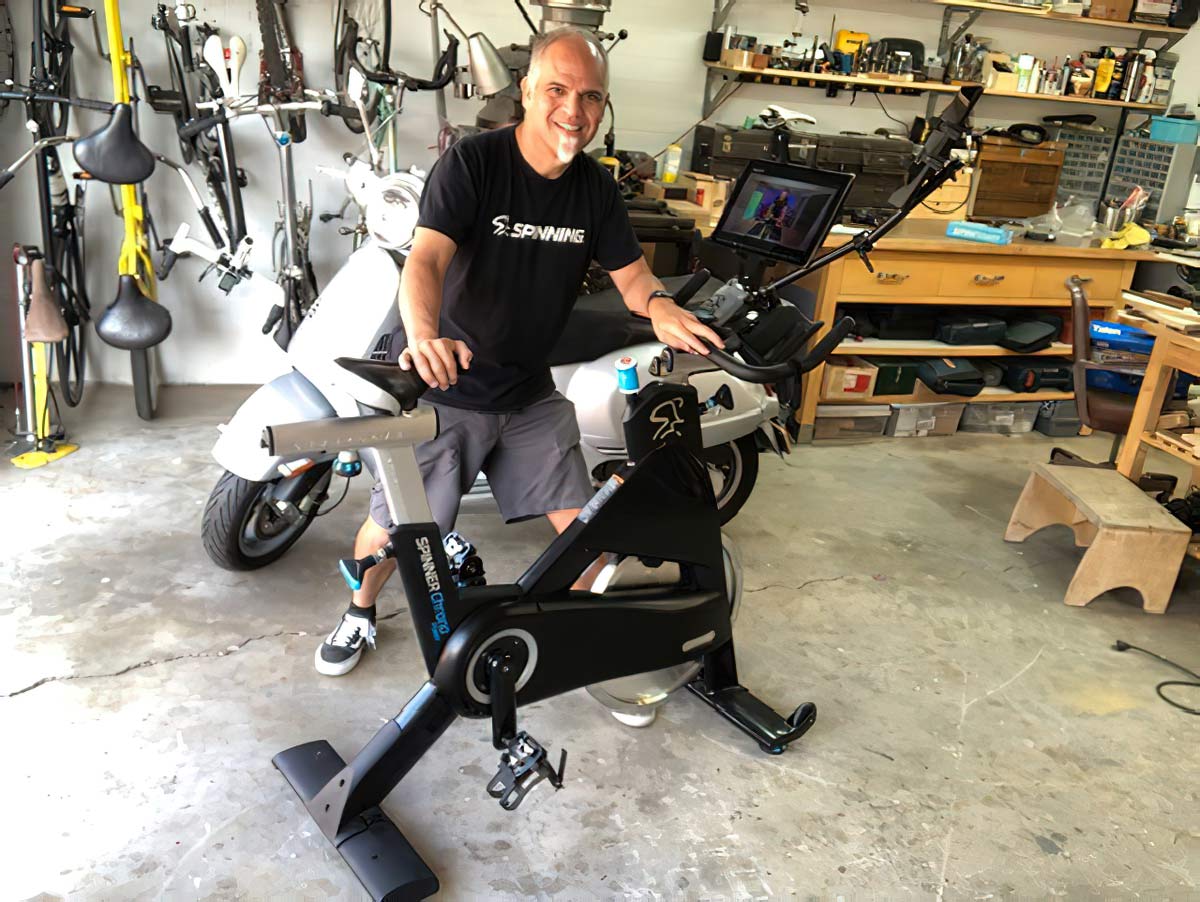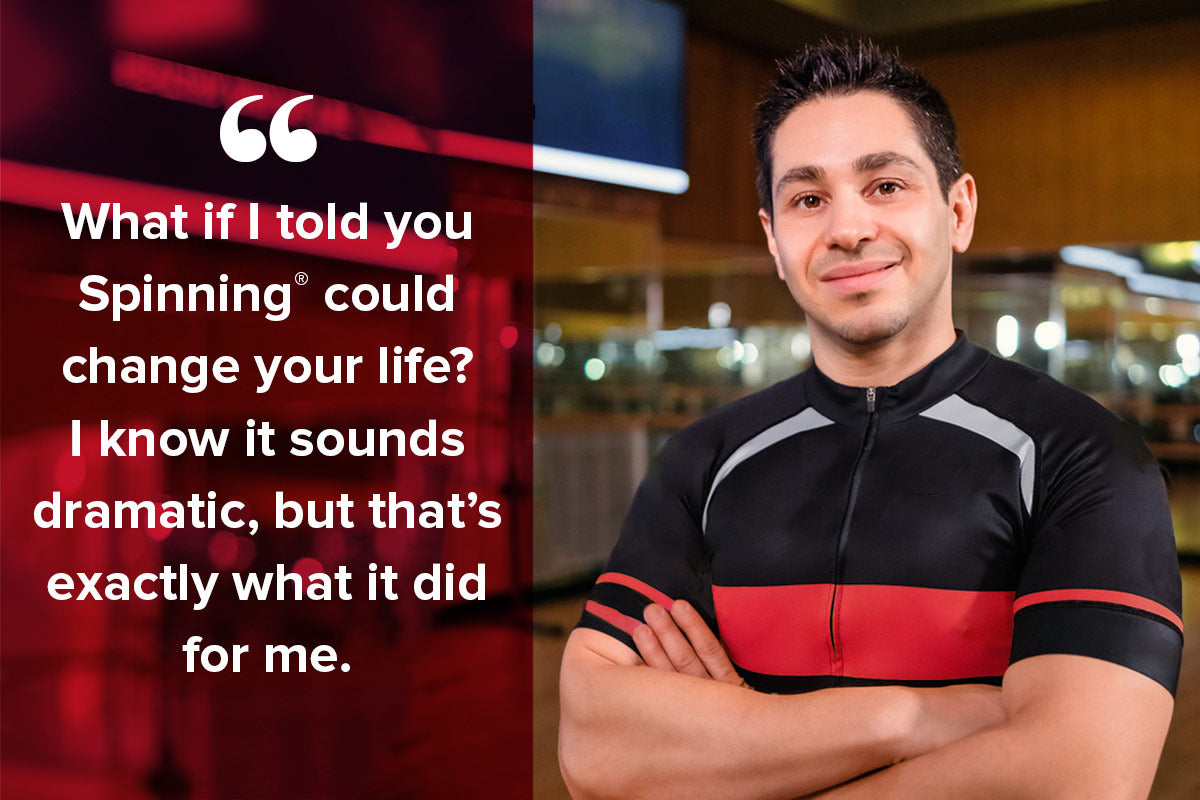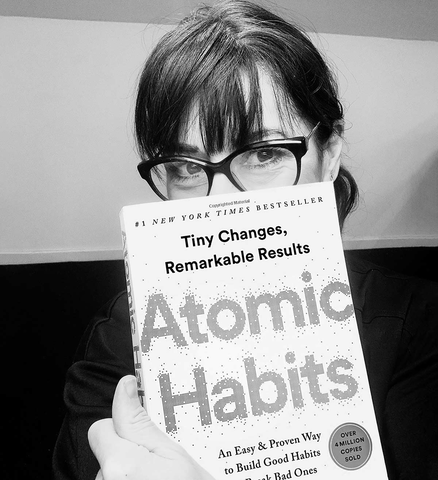There’s a man in our midst who we want you to know about. He loves to ride, teaches Spinning® classes regularly, and knows a thing or two about bikes. (Understatement of the year). John Cook has nearly 20 years of experience with Spinning® and Mad Dogg Athletics, and any product coming out of our doors has likely spent time on his desk. You can also be sure he’s inspected each design element of your bike countless number of times!
For as many years as John Cook has been with the company, he and Founder/CEO John Baudhuin have worked side-by-side sharing both a love of good bikes and passion for exceptional product design. Their camaraderie and friendship over the years, as well as knowledge of each other’s key strengths, has fostered bikes that we are proud to market and brand Spinning®.
Read on to get to know how John Cook has dedicated his passion and industrial design expertise into creating your Spinner® bike! We’re proud to say that John’s heartfelt love and passion for Spinning® is a key component of any bike’s magic.
Before we dive into your lead role as Industrial Designer, let’s talk a little about the John Cook who is a Spinning® Instructor.
One of the things that gets me every time I teach is just how eager people are to feel something real. For me, there’s nothing like seeing their faces when I teach a class – you hear what I’m saying, you’re inspired by it. There’s feedback.
Recently, while I was setting everything up for my class, I was thinking that it’s actually great that people have no idea how much work goes into each one. Just consider the music creation – there’s a ton of effort involved to compose a playlist where it feels natural to ride to the beat. And yet, if it’s done right, all you really experience in class is the feel-good feeling. You’re not lost in how the profile was created, you’re just enjoying it and riding right along to the music. Work and rest are in the right places and timed with the scientific knowledge that we learn in our instructor training.
It’s kind of like an amazing dish – like a dessert. You take that one bite, and you taste all the flavors. You don’t think about the cook who worked in the kitchen for hours. You just experience all the good feelings that come with a delicious bite. The behind-the-scenes is way more than anyone knows with both the Spinning® program and the Spinner® bike – at the end of the day though, what you walk away with is the great feelings of the Spinning® experience.
That’s a great segue into your work as an industrial designer – specifically Spinner® bike design. So, what you’re saying is that if we’re doing our job properly, the Spinner® bike design blends seamlessly with the philosophy of the Spinning® program and the skills of the Certified Spinning® Instructor to create an amazing and cohesive experience for the rider?
Yes. And this has been part of the goal all along. It’s not about the bike, but the bike is critical to making the experience what it is.

Speaking of that long-term Spinning® trajectory that you’ve undeniably been involved in, what are the tenants of good design that you’ve leaned on to continue to build upon the brand’s legacy?
JC: Well, as a legacy brand, there are tried and true mechanical systems and structure that we don’t veer away from because they work. Remember, the Spinner® bike is mechanical—it’s a piece of cardio equipment with a 30-year history. These guys (founders John and Johnny G) were cyclists, so as a brand, we come at everything from a cycling perspective, including all the tenants and trainings of road cycling and the Spinning® program. Overall, the design goals of Spinner® bike building are to keep the product clean, simple, approachable, intuitive, and motivational.
And under those auspices, we make bikes that we’d want to ride because they feel good. What does that mean? We aim to create a simple, easy-to-use, super comfortable, ergonomically-sound bike that adjusts for everybody so that they can enjoy the ride. The bike should feel so good, in fact, that it disappears from your focal point when you’re on it, so that you’re more involved in how your body feels, what the instructor is saying, grooving with the music, having fun. Everything on the bike fits in a natural place – so you barely notice it’s there.
Let’s get specific. Walk me through a design project. How do you tackle it to blend form and function, as well as be mindful of the Spinning® program philosophy and experience?
JC: Let’s take the resistance knob as an example…
We always start with function. You’ll notice that there are no clicks when you turn it. Actually, from the beginning, there have been no clicks. Why? When you’re turning the resistance knob, you should be tuning into how the effort or resistance level feels – not turning it a certain number of times/clicks/ticks to complete with anyone else. Spinner® bike design is informed by Spinning® philosophy – in this case, it’s all about your ride – no one else’s.
Now let’s talk about form. We intentionally made it the size it is so that your knees don’t bump it. Why not smaller? You’ve got to be able to grab it easily and have a good grip. Why not rubber? Rubber gets funky over time. It’s also designed so that it doesn’t catch sweat. You’ll notice the shape is overly simplified so you can both adjust resistance, but also use it as an emergency brake. Even the graphic we use conveys that function: the edge around the Spinning® logo is shaped like a stop sign.
| We look at the bike in a fresh way every time we design one. For instance, the bars and resistance knob, they look like they’re going to stand up to the workout you’re going to give it. And ultimately, while a ton of detail and design goes into every bitty part, it’s the Spinning® experience that we want you to remember. |
We’ve heard you say that the notion of “ecosystem” is rare in product design, but that Spinning® has it. Can you elaborate?
JC: The other day, I was talking to Spinning® Master Instructor & Senior Advisor Josh Taylor about the amount of resistance required for a new bike… I’m the designer, Josh is a former pro cyclist and Master Instructor who is instrumental in shaping the program. In essence, the people who make the products are just a part of a larger overall ecosystem of Spinning® that encompasses the product, the Spinning® program and Spinning® instructors. This ensures that Spinner® bikes are designed around the program. It’s rare in product design to have such an amazing program and an extensive network of instructors to guide an experience on the product.
What’s important to remember is that we’re all about the bike being the tool for the experience that is Spinning®. And there are three essential components to our ecosystem which enable us to deliver both the Spinner® bike and that Spinning® experience.
1. Instructor Training/Education. The curriculum is derived from road cycling technique and is based upon science – the science of our program is like the mechanical design of our bikes.
2. Classes. We teach instructors how to lead their classes so that riders have an effective workout and great experience on the bike. While the program is rooted in science, the classes help you to connect with how you feel on the bike.
3. Bike. All that you can do on the bike is informed by the program. For instance, the program’s hand positions inform the handlebar design.
Our amazing Spinning® community around the world as well as the brand’s history as the category initiator also contribute to this ecosystem that’s all about you having a great, effective and safe ride.
| You want to think about how you feel, you want to get into another place – that’s all about the Spinning® experience. |
So in the example I started with – my convo with Josh Taylor about resistance – essentially what we were getting at was the value of a perimeter-weighted flywheel on the new bikes. Remember the key ingredient to consider is inertia – the stored energy in the flywheel. If you were to stop pedaling (and you have no resistance on the bike), how much your pedals continue to carry on because of the energy stored in the flywheel is referred to as inertia. This can make for a jerky pedal stroke UNLESS there is perimeter weighting. Perimeter weighting smooths out your pedal stroke and makes your ride safer.
To bring it full circle, it’s because of conversations like that – between Josh the expert cyclist and me the designer – that we get to the heart of an ecosystem that puts the rider’s safety and enjoyment in the center. You find this at Spinning®, and it’s a unique brand in that sense.

| If we’ve done our job to design the bikes correctly, you see the bike from across the room, and it looks inviting. You think: That thing’s going to be strong, that thing’s going deliver and enhance my workout. And when you walk away, the bike is also something that hopefully reminds you of a rewarding experience too. |






Leave a comment
This site is protected by hCaptcha and the hCaptcha Privacy Policy and Terms of Service apply.